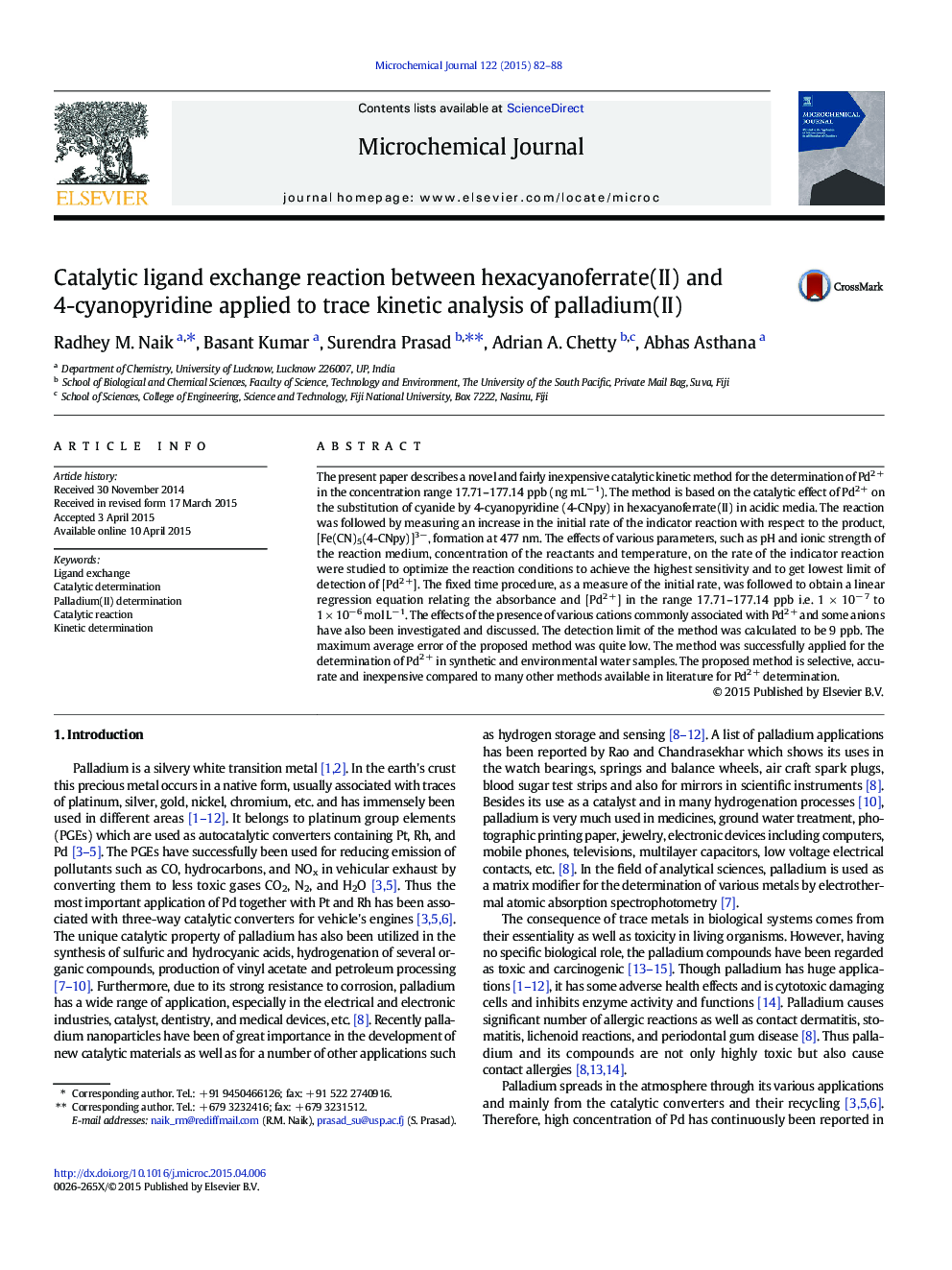| Article ID | Journal | Published Year | Pages | File Type |
|---|---|---|---|---|
| 1227764 | Microchemical Journal | 2015 | 7 Pages |
•First method for Pd(II) determination using hexacyanoferrate(II) and 4-CNpy•An inexpensive kinetic method is developed for determining palladium(II).•No interference is distinct advantages of the developed method.•Palladium is determined in water samples in long range 17.71–177.14 ppb.
The present paper describes a novel and fairly inexpensive catalytic kinetic method for the determination of Pd2 + in the concentration range 17.71–177.14 ppb (ng mL− 1). The method is based on the catalytic effect of Pd2 + on the substitution of cyanide by 4-cyanopyridine (4-CNpy) in hexacyanoferrate(II) in acidic media. The reaction was followed by measuring an increase in the initial rate of the indicator reaction with respect to the product, [Fe(CN)5(4-CNpy)]3 −, formation at 477 nm. The effects of various parameters, such as pH and ionic strength of the reaction medium, concentration of the reactants and temperature, on the rate of the indicator reaction were studied to optimize the reaction conditions to achieve the highest sensitivity and to get lowest limit of detection of [Pd2 +]. The fixed time procedure, as a measure of the initial rate, was followed to obtain a linear regression equation relating the absorbance and [Pd2 +] in the range 17.71–177.14 ppb i.e. 1 × 10− 7 to 1 × 10− 6 mol L− 1. The effects of the presence of various cations commonly associated with Pd2 + and some anions have also been investigated and discussed. The detection limit of the method was calculated to be 9 ppb. The maximum average error of the proposed method was quite low. The method was successfully applied for the determination of Pd2 + in synthetic and environmental water samples. The proposed method is selective, accurate and inexpensive compared to many other methods available in literature for Pd2 + determination.
